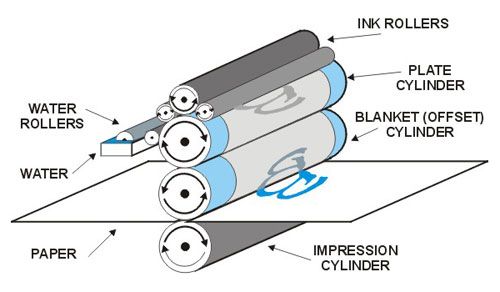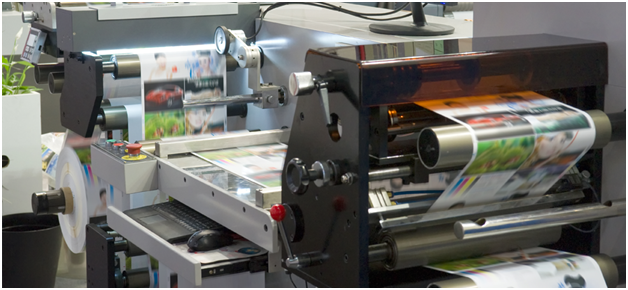litho printing Explained: A Primer for Starters
litho printing Explained: A Primer for Starters
Blog Article
A Comprehensive Overview to Comprehending Litho Printing Strategies
The globe of litho printing, a strategy stemming from the late 18th century, is an interesting mix of background, art, innovation and science. This thorough guide will certainly untangle the intricacies of this printing approach, from the make-up of litho inks to the challenges faced in modern-day applications. As we venture into the intricacies of lithography, the significance of automation and sustainability in ensuring its future relevance comes to be significantly clear. Keep with us as we trip right into the exciting world of litho printing.
The Historic Advancement of Litho Printing
The historic trajectory of litho printing, a crucial development in the realm of communication, is an exciting story of human resourcefulness. The procedure evolved with the introduction of the rotary press, which considerably raised efficiency. Each stage of litho printing's advancement showcases mankind's ruthless quest of effectiveness and quality in visual interaction.
Translating the Scientific Research Behind Litho Printing Inks
Moving on in the exploration of litho printing techniques, the focus now shifts to the scientific research behind litho printing inks. The make-up of these inks, their drying out process, and color mixing strategies develop the backbone of this intricate art form. Recognizing these aspects is important to understanding the craft and accomplishing the preferred print outcomes.
Composition of Litho Inks
In lithographic printing, the basic duty of litho inks can not be overemphasized. The structure of litho inks varies depending upon its objective, yet normally, they contain 2 primary components - automobiles and pigments. Pigments, the color-providing aspects, are finely ground fragments put on hold in the car, a fluid that carries the pigment onto the printing surface. The car is a complicated combination of materials, oils, and solvents, which influence the ink's drying time, adhesion, and gloss. Furthermore, different additives exist to enhance certain buildings like flow, drying, and resistance to ecological effects. Each component plays a critical component in the last print's quality, making the accurate formula of litho inks an elaborate science.
Ink Drying Refine
From the composition of litho inks, interest transforms to the interesting process of ink drying out. Two primary approaches are made use of in litho printing: oxidative drying out and absorption. Absorption, on the other hand, includes the ink permeating into the paper fibers, which is a much faster procedure however can lead to much less vibrant colors.
Color Combining Methods
While the drying process plays a key function in litho printing, the science of color mixing methods holds equal importance. This is an intricate process that includes the mindful mixing of primaries: cyan, magenta, and yellow, in varying proportions to achieve a wide variety of hues. The addition of black ink, referred to as 'crucial', aids in managing the intensity and deepness of the shades. The scientific research behind litho printing inks likewise thinks about the transparency of the Website ink, which influences how colors overlay and mix. To accomplish an effective color mix, print professionals have to additionally recognize the details of ink habits, shade theory, and the physical properties of the substratum on which the ink is used.
The Art and Layout Aspects in Litho Printing
Litho printing takes a breath life right into art and layout with its distinct components. The procedure entails creating a picture on a lithographic limestone plate or metal plate with a smooth surface area. The photo is then published onto a tool, generally paper, by moving the ink from the plate. What sets litho publishing apart is its ability to replicate intricate designs with high integrity, making the result nearly the same to the original artwork. This is accomplished via using various line strategies such as hatching, cross-hatching, and stippling, which permit a series of tonal effects. Furthermore, litho printing suits a variety of colors, allowing artists to produce vibrant and lively prints. This combination of precision and adaptability makes litho printing a favored selection for several musicians and designers.
Modern Applications of Litho Printing Methods
Litho printing strategies have found considerable use in the modern industrial sector. Its impact and relevance remain to expand with the introduction of new innovations and modern technologies in the field. This section will certainly check out these contemporary applications and the transformative role they play in the printing sector.
Business Litho Printing Makes Use Of
In today's electronic age, he has a good point one may ask yourself regarding the relevance of conventional printing techniques. Yet, litho printing stays a vital component of the commercial industry. High-volume printing tasks, such as the production of publications, papers, and product packaging, rely upon litho printing for its capability to supply premium picture quality and expense efficiency. The process, which involves transferring an inked image from a plate onto a rubber covering and afterwards to the printing surface, provides unequaled consistency. This makes it optimal for jobs calling for a big print run. Litho printing likewise supplies a broad shade spectrum, remarkable to visit this site right here that of electronic printing. This makes it the go-to option for tasks that require vibrant, top quality color reproduction.
Developments in Litho Printing
Pressing the boundaries of traditional methods, modern-day advancements have fueled a host of innovations in litho printing. One prominent development is digital litho printing, which incorporates the virtues of electronic innovation with litho's high-grade output. These advancements underscore the enduring significance of litho printing in the contemporary globe.
Exploring the Process of Litho Printing: Step by Step

Obstacles and Solutions in Contemporary Litho Printing

In spite of the precision and practice that litho printing happily promotes, it is not without its collection of contemporary challenges. Digital litho printing allows for cost-efficient brief runs and easy customization, attending to the problem of variable information. Therefore, while there are difficulties, the litho printing sector is proactively adjusting to fulfill them head-on, guaranteeing its significance in the future.
Conclusion
In verdict, litho printing, with its rich history and scientific complexities, holds a substantial place in the print market. The future of litho printing hinges on its capability to adapt to these transforming demands, verifying its long-lasting worth in a progressing market.

Report this page